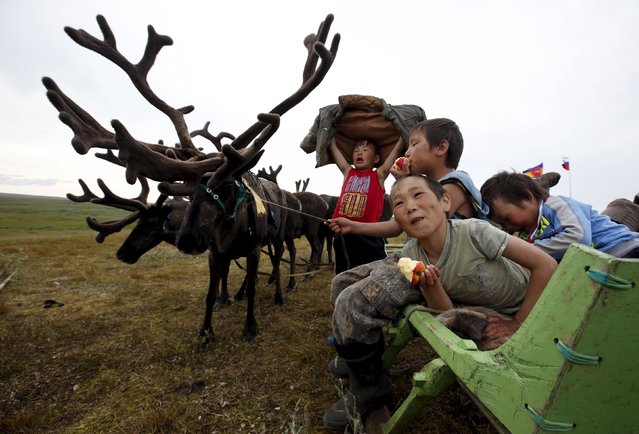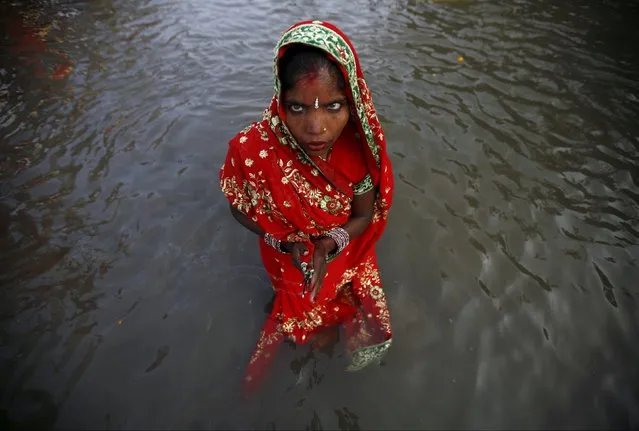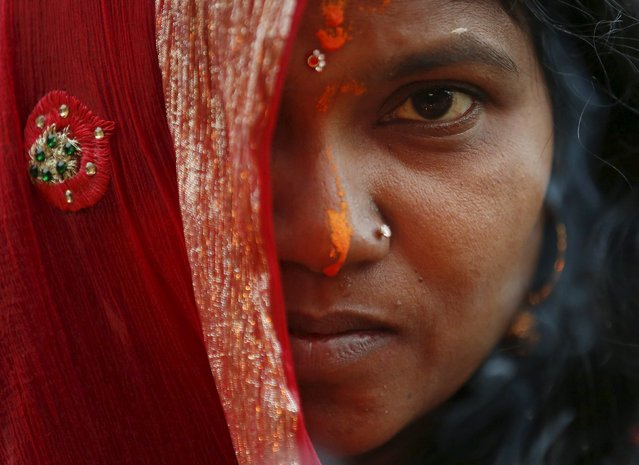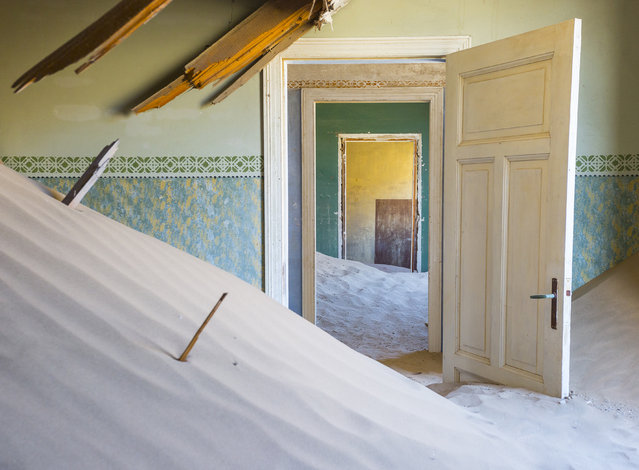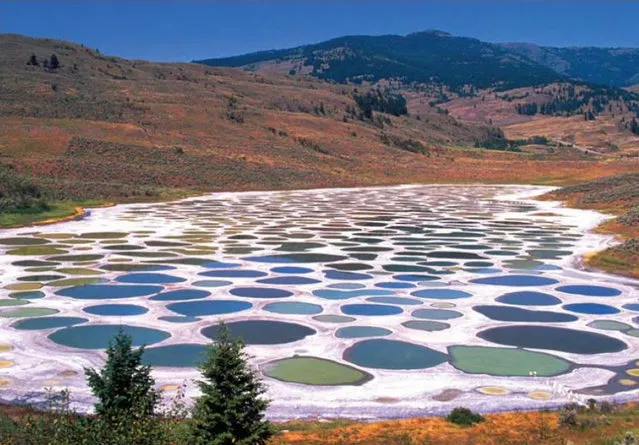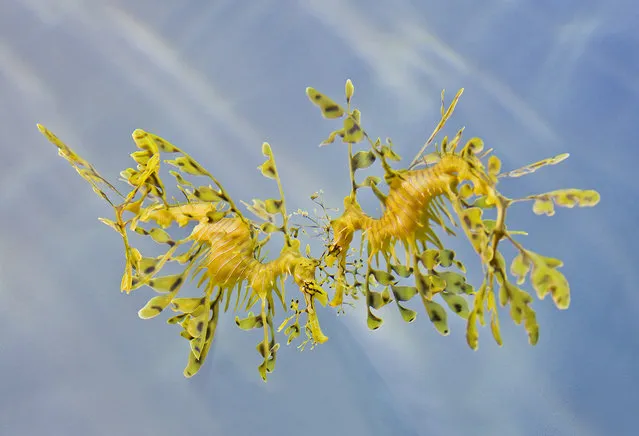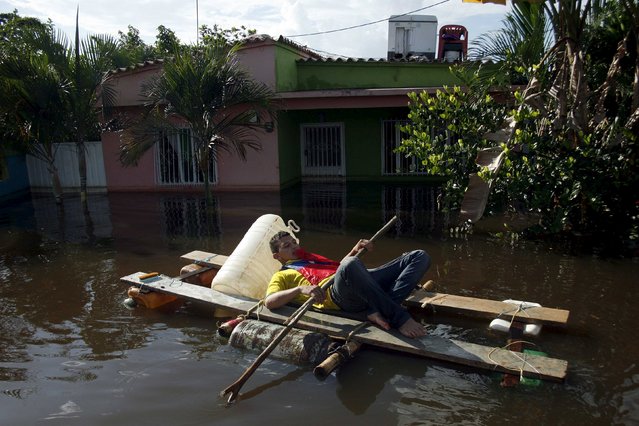
A man paddles a makeshift boat along a flooded street in Guasdualito, in the state of Apure, Venezuela, July 4, 2015. A total of 9,000 families have been affected by the overflowing of rivers Arauca and Sarare in Guasdualito, Apure state, because of the heavy rains in recent days in this area of the country, local media reported. (Photo by Carlos Eduardo Ramirez/Reuters)
06 Jul 2015 10:22:00,post received
0 comments

